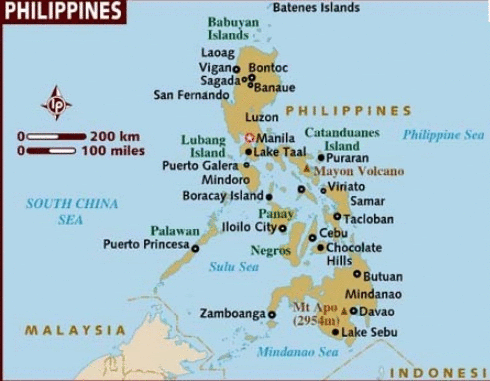Economically:
During the beginning of Spanish rule, locals had little say, both socially and economically. A type of tax farming called encomienda dominated the Philippine economy. Basically, ‘’it consisted of a grant by the crown to a conquistador, soldier, official, or others of a specified number of Indians living in a particular area.’’ The encomendero received the grant and could demand tributes of gold, people, or labor from the locals. They were also expected to protect them and instruct them in the Christian faith, much like feudalism. (12)
However, the encomenderos neglected their obligation of Christian instruction and abused local tribute payers. They also kept profits from the crown, which caused the Spanish to change this system at the end of the 17th century. The king appointed a governor-general, and began to appoint his own civil and military governors to rule directly. The governor-general was omnipotent and all the locals still had to obey him. The Chinese were also attracted to the Philippines due to quick profit of Chinese silk to Mexican silver. They eventually established a commerce that flourished for centuries. (9)
Agriculture changed fairly slow until the 18th century. Intensive sedentary farming reinforced class differences. Datus (local leaders) and other representatives of the noble class abused absolute ownership of land, claiming it as their own fields, even though traditional lands were protected. The church also owned many lands, and often seized them from the possession of the local peoples.
In the late 18th century, political and economic change in Spain affected the Philippines. This economic change eliminated the monopoly by the Galleon to Acapulco. The last Galleon came in 1815 and in the mid 1830’s, Manila was open to foreign trade almost without restrictions. Demands for sugar and hemp grew, with the Suez Canal expanding trade to more of Europe. (4) This was important because due to political influence from Europeans, they traded more cash crops instead of only producing enough for a local self-sufficient surplus.
Religiously and Socially:
The Spanish were not treating the local Filipino people harshly, but they were not treating them fairly either. Nevertheless, there were some benefits of being under Spanish control. The Spanish built Roman Catholic hospitals and schools; the local Filipino people could obtain better healthcare and acquire better education. However, the Priest tried to move all people into pueblos surrounding great stone churches, and suppressed local religions. The conquerors did not tolerate old practices; the Spanish wanted Christianity for all. Despite the efforts, barangays were still more popular. Many people in the Philippines speak Spanish and are Christian due to the conquest. (9)
Intellectually
Spain, for a long time, used education in the colony to maintain power and position. Religious orders ‘’excluded teaching of foreign languages and scientific and technical subjects from their curricula.’’ Public complaints and unrest forced the Spanish government to give in to the demand for educational reform, and in 1863, they introduced public education. However, it was controlled by church curriculum and not many people could go to school. Only 1 in 5 children could read and write Spanish; most couldn’t speak it properly.
Connection of trade: Growth in trade resulted in a new class. There were the landowners of the Church and rice estates of pre-Spanish nobility. Haciendas of coffee, hemp, and sugar arose, often from the Chinese-Filipino mestizos. Prosperity grew and people wanted professional educations.
Spain exposed the Philippines to international commerce, and eventually ‘’contemporary currents of European political though.’’ (4) The lack of proper education and the desire for more advanced foreign education led to Filipino students studying abroad and bringing home ideas of reform during the 1880’s, which upset Spanish authority. Filipinos gained a new sense of nationalism and passion for reform. Overseas Pilipino students formed the Propaganda Movement. (9)
Religion and Revolt:
The Filipino people resented the Spanish for not including them in religious orders and priesthood. This led to the armed revolt of Apolinario de La Cruz in 1841, which culminated in Brother Apolinario being executed. Next year in Cavite, 200 Filipino recruits revolted and murdered Spanish officers. Spain brutally suppressed the revolt, and the insurgents’ actions gave the Spanish an excuse to arrest the liberals or put them into exile. They repressed the rebels and executed reformist fathers Jose Burgos, Mariano Gomez, and Jacinto Zamora. A public firing squad executed them on February 20, 1872 and they became martyrs. Repression led to the joining of the religious and secular into a common ‘’spirit of Filipino nationalism’’ that opposed the Spanish Authority. Less privileged Filipino people became devoted to gaining independence. (9)
Requests for Reform:
Jose Rizal, an overseas student, wrote two novels that had great influence. In 1892 he returned home and formed Liga Filipina, a society wanting reform. It was loyal to Spain, and did NOT want independence, however, he was arrested and exiled to a remote island. When the Katipunan revolted against Spain, Rizal was accused of conspiracy even though he had taken no part in the group. He was executed by a public firing squad in 1896 and died a martyr. (9)

No comments:
Post a Comment